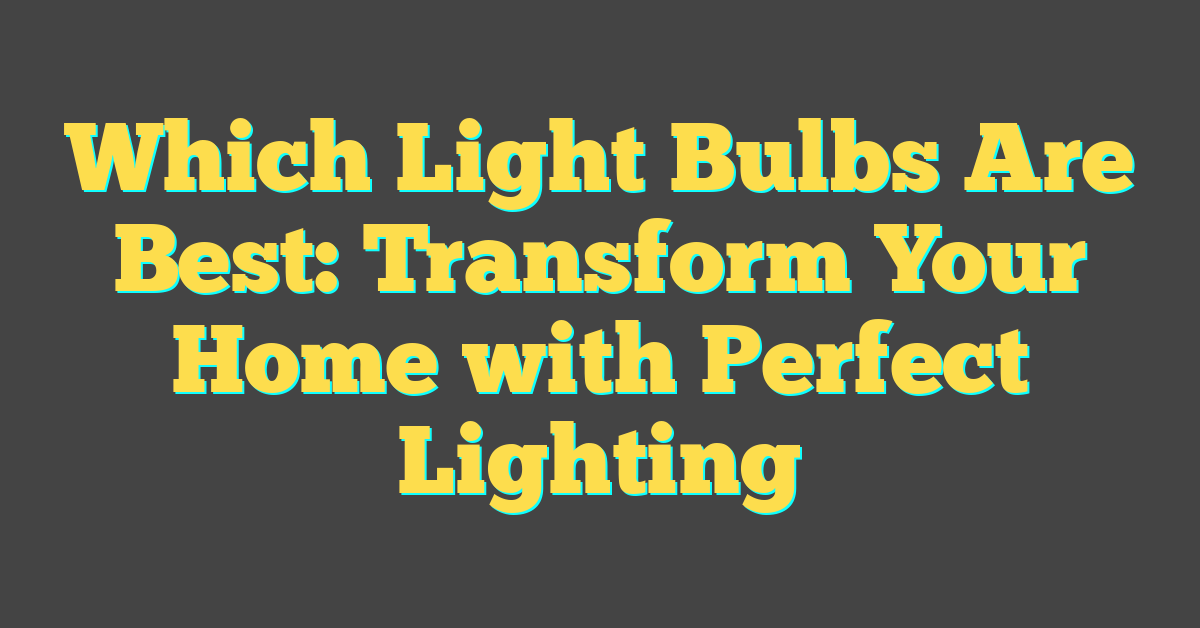Ever wondered how big light bulbs really are? You’re not alone. Light bulb sizes can be as varied as the fixtures they illuminate, and understanding the dimensions is key to choosing the right one for your space.
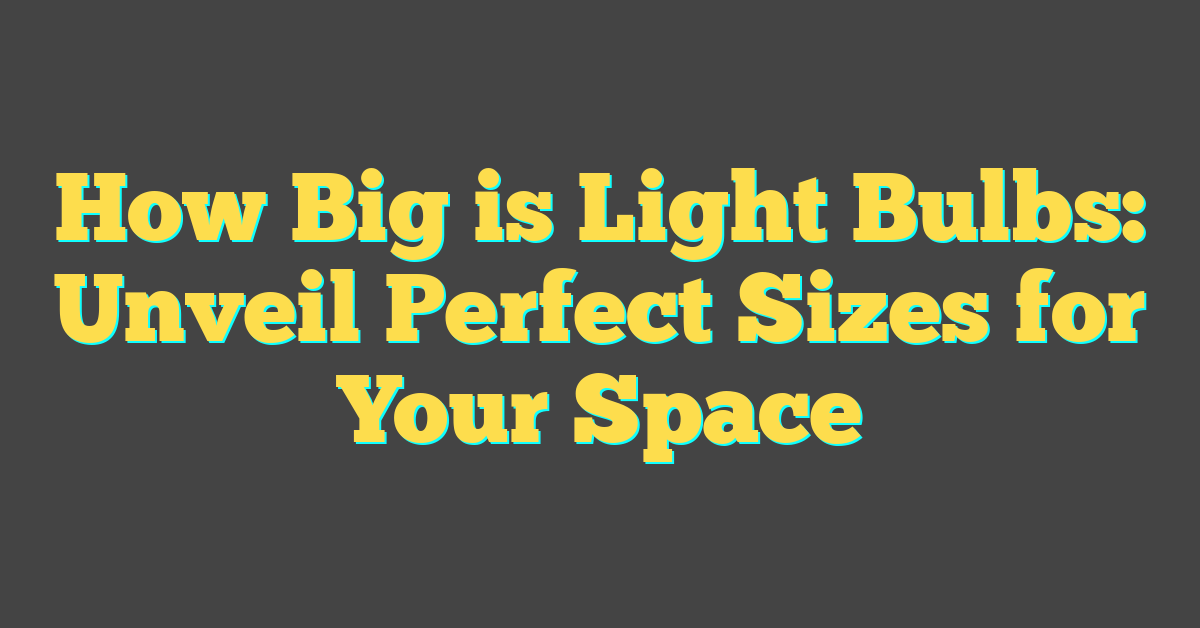
From tiny LEDs to grand chandeliers, light bulbs come in an array of sizes that can be baffling. But don’t worry, you’re about to get a clear picture of how size matters in the world of lighting.
Exploring Light Bulb Sizes
When you’re elbow-deep in your latest home DIY project, sizing up the right light bulb is as crucial as picking the perfect paint color. Like a puzzle, your lighting fixtures need the correctly sized bulb to bring them to life. Let’s dive into the common sizes you’ll encounter and what they actually mean for you.
You’ve probably heard of terms like “A19” or “PAR38”, but what do these codes tell us? Essentially, these are industry standards that refer to the shape and size of the bulb. The letter signifies the shape, where “A” stands for “Arbitrary” – the classic light bulb shape. The number that follows represents the diameter at the largest point, measured in eighths of an inch. So, an A19 bulb is 2 and 3/8 inches in diameter.
| Bulb Code | Shape | Diameter (inches) |
|---|---|---|
| A19 | Arbitrary | 2.375 |
| PAR38 | Parabolic | 4.75 |
| MR16 | Mirror Reflector | 2 |
| G25 | Globe | 3.125 |
In the Spotlight: Bulb Base Sizes
Just as key to your lighting success is the base of the bulb. Ever tried screwing in a bulb only to find it just won’t twist into place? You might have been dealing with a mismatched base. Typically, in the United States, you’ll find these base sizes:
- E26: The standard size for most light fixtures.
- E12: Often seen in smaller, decorative lamps, known as the “candelabra” base.
- GU24: Features two pins that twist and lock into place, commonly found in newer, energy-efficient homes.
Bear in mind, some light fixtures and bulbs are designed with pin bases, which are not screw type, and they require a precise match to ensure they click into place properly. Being armed with this knowledge ensures you’re never left fumbling in the dark.
Understanding the Dimensions
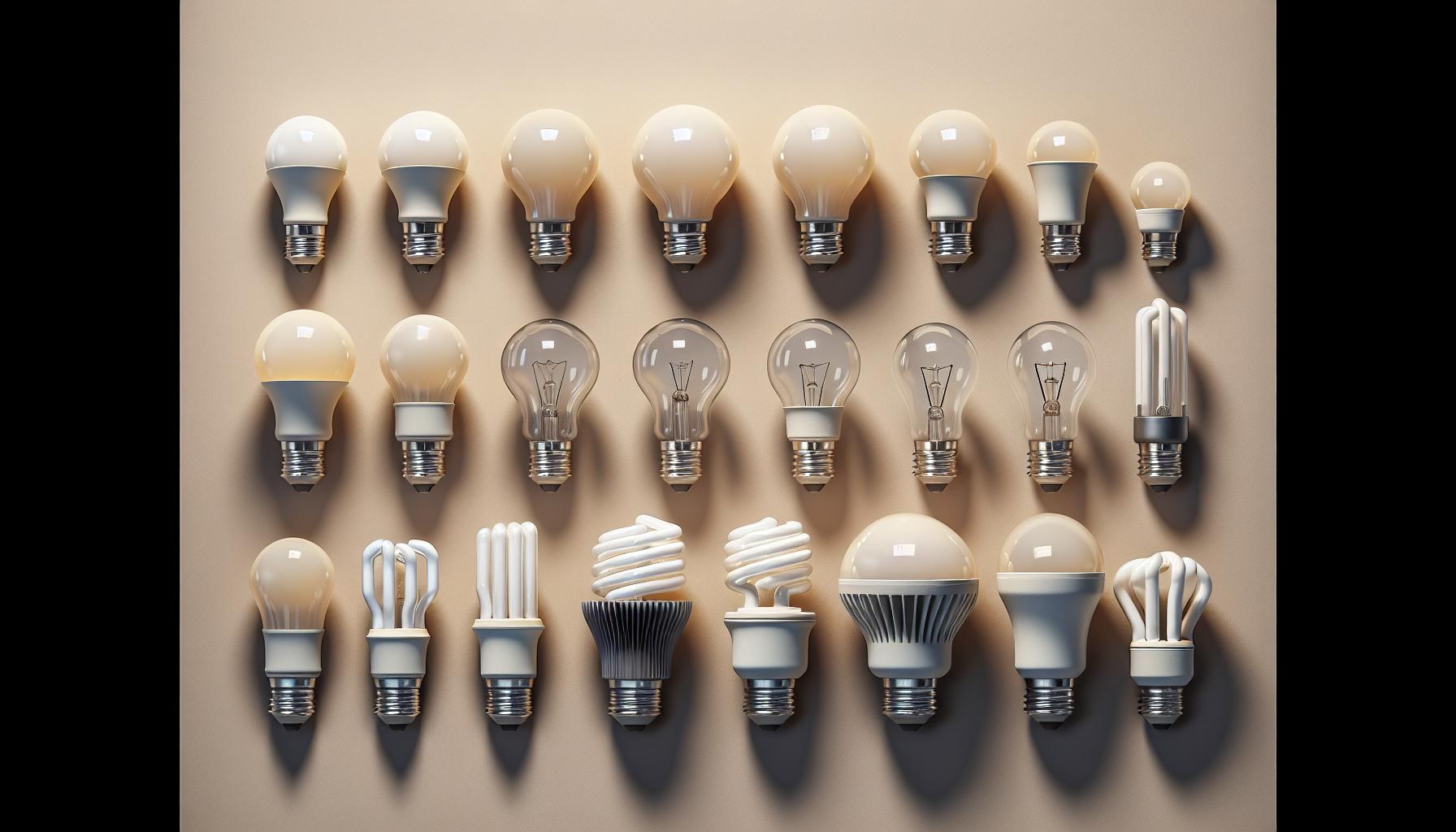
Knowledge about light bulb dimensions goes beyond just the type and shape. When you’re diving into a home DIY lighting project, you need a clear understanding of the measurements that detail a bulb’s size. This understanding will save you time and prevent the frustration of purchasing the wrong bulb for your fixture.
First off, let’s break down the dimensions you’ll often see on bulb packaging. The diameter is the bulb’s width at its widest point, typically measured in eighths of an inch, and is the number you’ll find immediately following the bulb type. For instance, an A19 bulb has a diameter of 19 eighths of an inch, which is approximately 2.375 inches wide.
The length of the bulb can also play a significant role, especially in enclosed fixtures. Length measurements will vary widely depending on the bulb type. It’s always wise to measure the space where the bulb will be placed, ensuring enough clearance.
Height consideration is crucial, especially for aesthetic purposes, when the bulb will be visible and part of the decor, like in open pendant lights or chandeliers. With decorative bulbs or those with special shapes, such as candelabra bulbs, understanding height becomes as important as the diameter.
Here’s a simple breakdown of standard bulb dimensions that you might find helpful:
| Bulb Type | Diameter (inches) | Length (inches) |
|---|---|---|
| A19 | 2.375 | 4.13 |
| A21 | 2.625 | 5 |
| PAR38 | 4.75 | 5.31 |
Always remember to check the dimensions against the space you have available. With specially designed fixtures or those that have unique decorative elements, the available space for a bulb might not be standard, and a standard-sized bulb might not fit. When in doubt, grab your measuring tape; it’s your best friend in ensuring you get the right bulb for your space.
And don’t forget about the base size—measure or take note of your fixture’s socket size as well. Normally, this won’t change much as long as you’re replacing a bulb from an existing setup, but it’s better to be safe than sorry.
Different Sizes for Different Fixtures
« Can You Paint Light Bulbs? Unlock Creative Home Decor Ideas
Can Light Bulbs Be Stored in a Hot Garage? Discover Safe Storage Solutions »
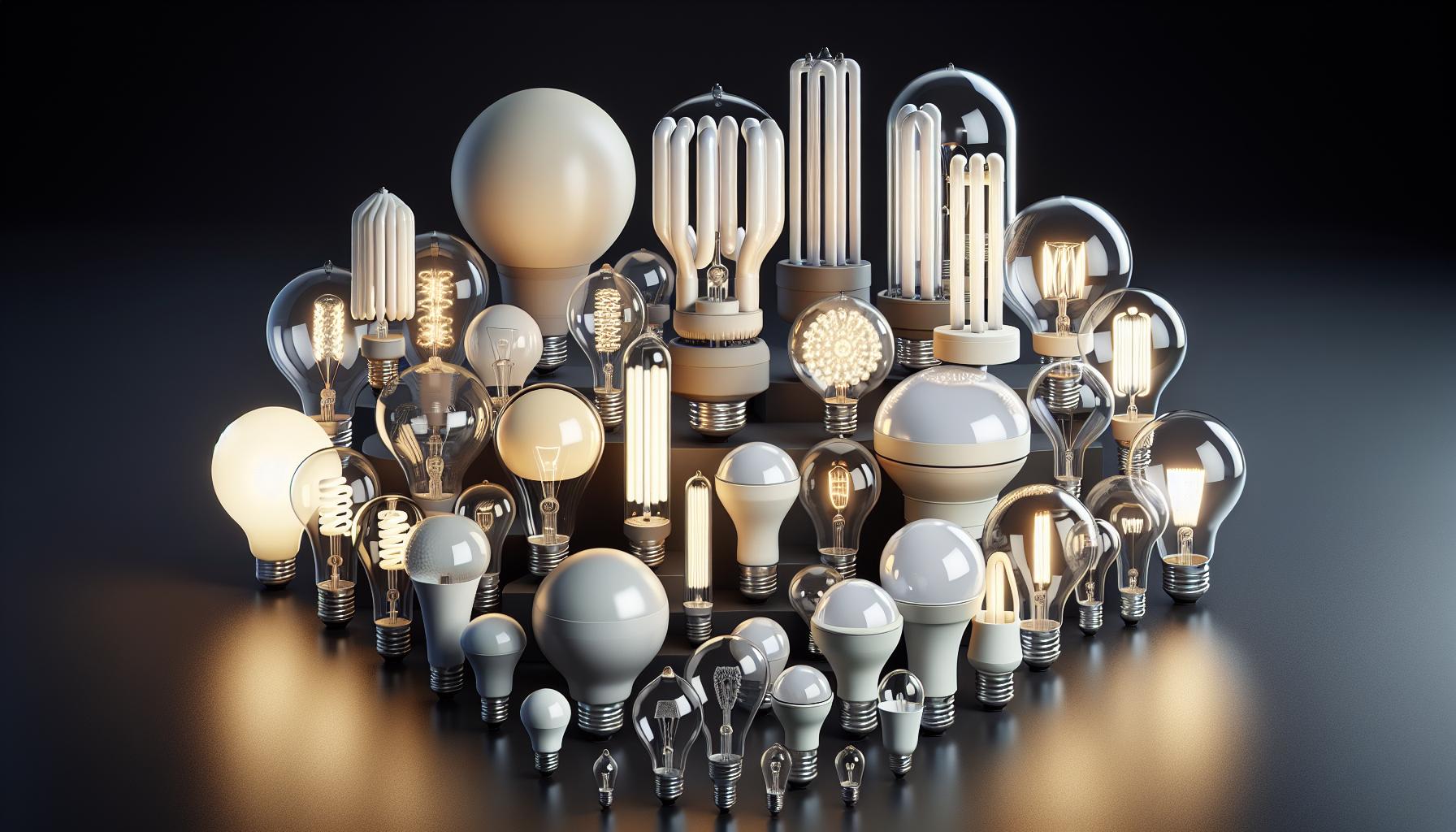
When tackling the plethora of bulb sizes, it’s crucial to recognize that not every bulb fits into every fixture. This might sound straightforward, but novices to the DIY lighting scene often overlook this fact. You’ve probably encountered this yourself when a bulb purchase didn’t pan out because it was too big or the base didn’t match the socket.
Here’s a bullet-proof guide to matching bulbs to fixtures:
- Ceiling fixtures often accommodate a wide range of bulb sizes, but they generally look best with A-series bulbs. These are your classic shaped bulbs that taper towards the base and provide even light distribution.
- Table and floor lamps are usually designed for A-series or smaller globe bulbs. If you’re going for a decorative look, you might opt for candle-shaped bulbs that bring elegance and a certain je ne sais quoi to a room.
- Recessed lighting requires bulbs that are specifically designed to fit into the can-like space. These are often reflector bulbs (R-series) which direct light downward, perfect for spotlighting areas of your home.
- For track lighting, you’ll want to use MR (multifaceted reflector) bulbs. They’re designed to fit the unique fixture heads that may be adjustable or fixed.
It’s not just about the bulb fitting physically; consider the aesthetics too. Here’s what to keep in mind:
- Scale is essential. A bulb too large can look outlandish in a delicate antique lamp, while a tiny bulb in a large open lantern can seem underwhelming and provide insufficient light.
- Light direction matters. Different fixtures are built to cast light in specific directions, whether it’s diffused for ambient light or concentrated for task lighting. Choose a bulb that complements the fixture’s purpose.
Diving into the specs of bulb bases can take you deeper into the rabbit hole. There’s a myriad of base types, from the widespread Edison screw base to the pin and bi-pin bases often found in specialized or miniature bulbs. Stay tuned for the next section where you’ll get the 411 on bulb bases, ensuring you’re armed with the knowledge to make your next bulb change a breeze.
Tiny LEDs to Grand Chandeliers
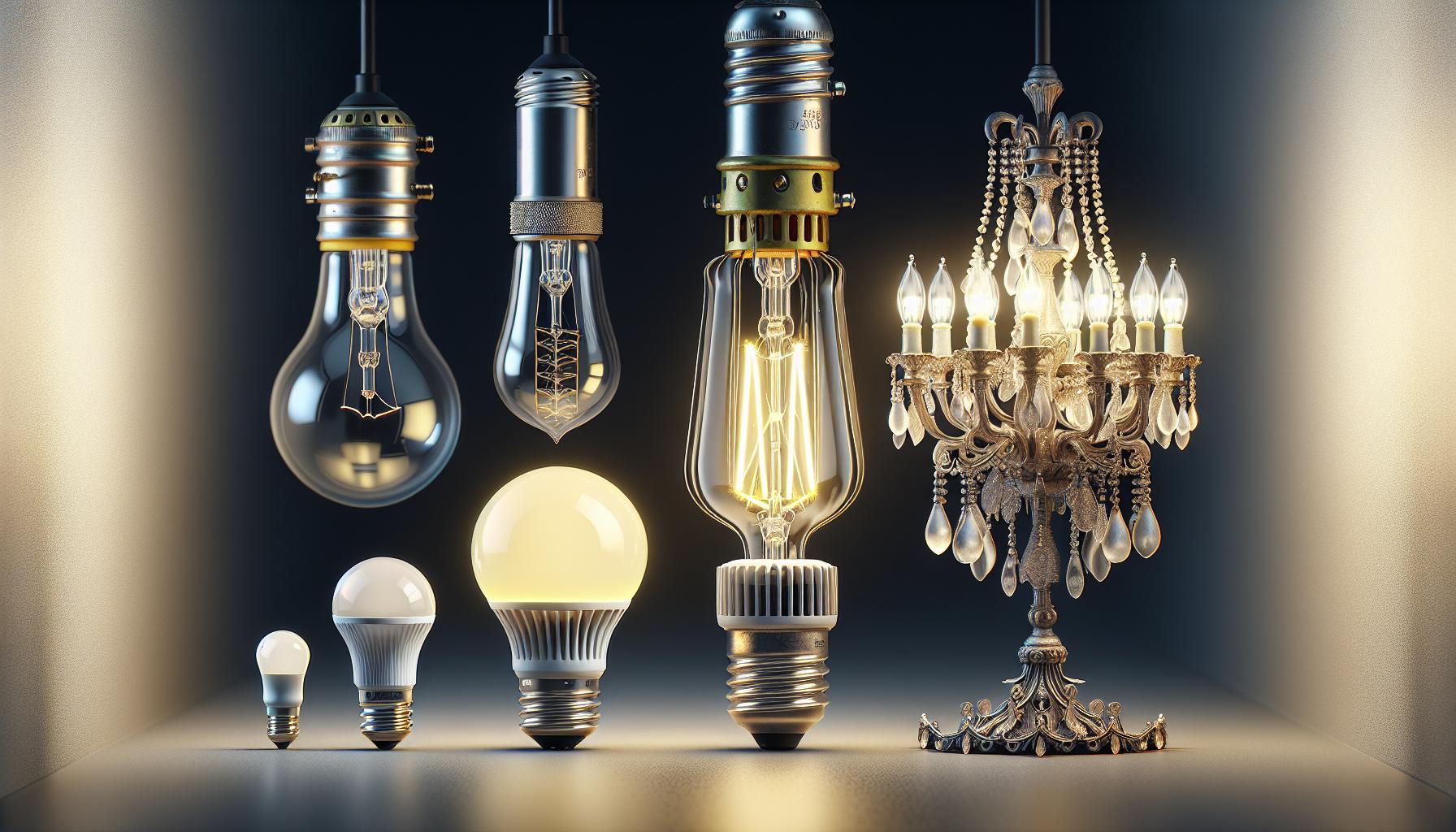
When diving into the expansive world of light bulbs, you’ll find that size can range from incredibly small LEDs to the opulent grandeur of chandelier bulbs. With technological advancements, LEDs (light-emitting diodes) have shrunk considerably while still providing brilliant light. These tiny powerhouses are often found in a variety of applications, from intricate task lighting to modern smart home systems.
LEDs are celebrated not just for their size but also for their efficiency and longevity. Here’s a quick glance at their typical dimensions:
| Type | Diameter (mm) | Length (mm) |
|---|---|---|
| Miniature LEDs | 2 – 3.5 | 4 – 6 |
| Standard LEDs | 5 – 8 | 16 – 20 |
Note that these dimensions can vary based on the specific design and application of the LED.
Moving up the scale, we encounter standard light bulbs, commonly used in household lamps and fixtures. These bulbs come in varying sizes, with the traditional A19 shape measuring approximately 60mm in diameter and 110mm in length. It’s the go-to bulb for general lighting needs and has been lighting up homes for decades.
On the more grandiose end, we have bulbs designed for chandeliers. These decorative bulbs not only illuminate but also add an element of style and elegance to the room. Some chandelier bulbs mimic the look of candle flames, with slender shapes and warm, ambient light. It’s crucial to pick the right size for both aesthetic and functional harmony. Chandelier bulbs generally have smaller bases, like the E12 candelabra, to fit into the delicate arms of the fixture.
Regardless of the size, from LEDs to chandeliers, the goal remains the same: illuminating your space effectively while complementing the aesthetic. As you consider the various sizes, remember to measure your fixtures and understand the mood you want to set. Bulbs aren’t just about the fit; they’re a statement piece, a subtle nuance that breathes life into your home’s design.
Conclusion
So you’ve seen how the size of a light bulb can impact the look and feel of your space. Remember, it’s not just about finding a bulb that fits; it’s about choosing one that complements your home’s design and serves its purpose beautifully. Whether you’re illuminating a cozy reading nook or adding flair to your chandelier, the perfect bulb size is out there. Now go ahead and light up your world with confidence!
Frequently Asked Questions
Why is understanding light bulb sizes important?
Understanding light bulb sizes ensures that you choose a bulb that fits properly into your fixture and suits the space both aesthetically and functionally. It helps in creating the desired ambiance and lighting effect.
What should I consider besides the shape and type of a light bulb?
Beyond the shape and type, consider the dimensions of the bulb such as diameter, length, and height, especially how it fits in your particular fixture and within the context of the space where it will be used.
What are standard bulb dimensions?
Standard bulb dimensions vary depending on the type of bulb. For instance, miniature LEDs might have significantly smaller measurements than standard light bulbs. The article provides specific breakdowns for different bulb types.
Are there special bulbs for chandeliers?
Yes, there are special bulbs designed for chandeliers. These bulbs often combine functionality with style, contributing to the elegance and atmosphere of a room.
Can the wrong size bulb affect the design of my home?
Absolutely, the wrong size bulb can negatively impact the overall aesthetic and lighting of a space. Bulbs can serve as statement pieces that enhance your home’s design, so choosing the right size is critical.

